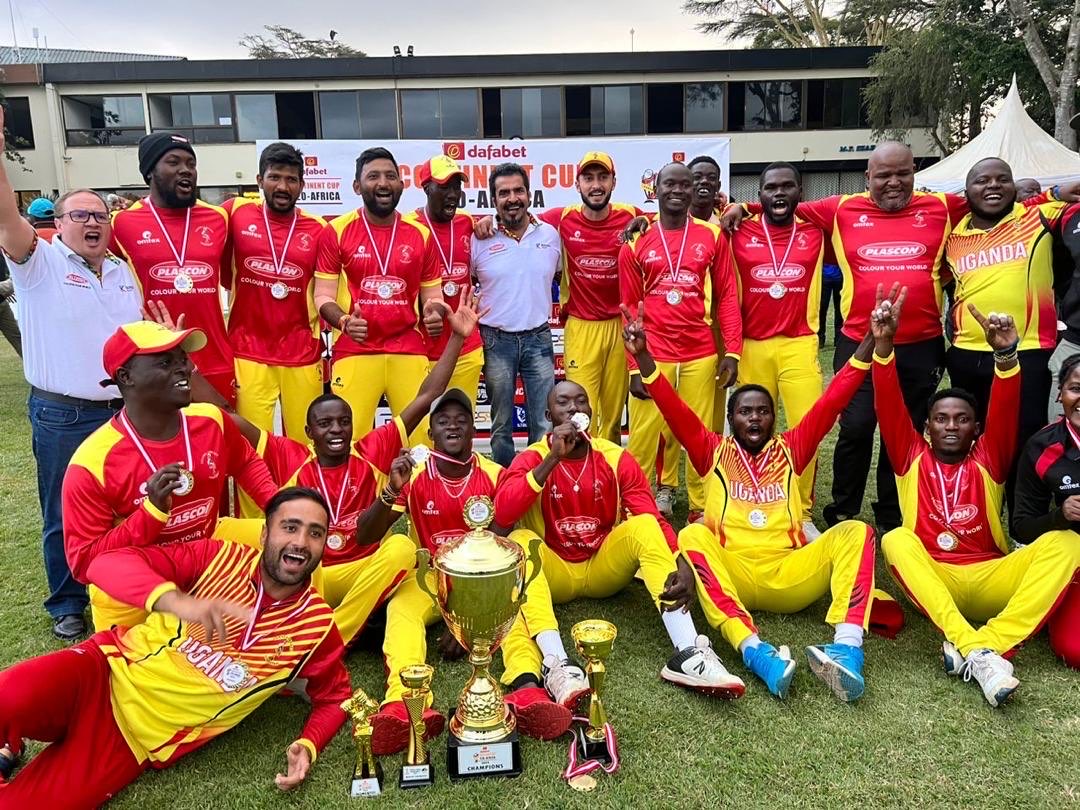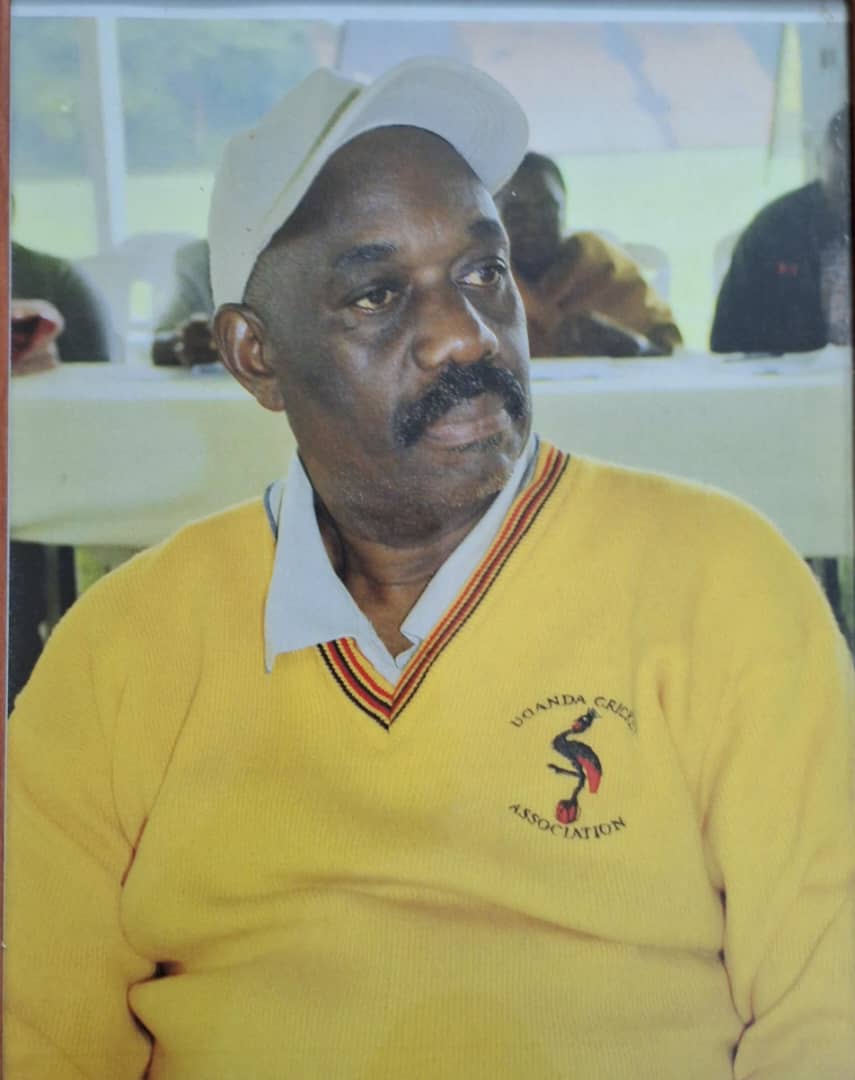Story
Uganda's baptism of fire: From expulsion and return of Asians to rise of indigenous players
13 May, 2024
When military dictator Idi Amin rose to power in Uganda, he expelled the Asians who were the biggest investors in cricket; however, it also sparked a need to revive cricket through indigenous Ugandans and the result is there for all to see
 Bareera K.H.
Bareera K.H.
A young aspiring cricketer beginning to write
 Khurram Habib
Khurram Habib

When Samuel Walusimbi, a Uganda cricketer who participated in the 1975 World Cup as part of the East Africa team that also included players from Kenya, Tanzania and Zambia, arrived home from a cricket assignment in England, he realised the enormity of the task that lay before him following the expulsion of the Asian communities.
Idi Amin, a military general, had taken over control of the country, reportedly in cahoots with the Israeli government** and driven Asians out of the country, pauperising the cricket structure that was built in schools and institutions thanks to those who had migrated from the sub-continent, largely Indians.
Walusimbi, an indigenous Ugandan and one of the top cricketers left behind following the expulsion of Asians, was tasked with the upkeep of cricket in the country and its indigenous populations.
“My friend with whom I had toured England [in 1972] stayed back in England. So when I came back, the onus was on me because I had played at a much higher level than other indigenous Ugandans. So I used to go around schools, coaching schools that had played before to ensure that the game doesn’t die,” recalled Walusimbi to www.theflyslip.online.
“I used to go to schools all around the country, coaching, not being paid by anybody. I was on my own really. I would go to different places, most of which were schools for which I had been playing before. This is how tough it was. Duncan (his friend) stayed back in England from 1972 till when he passed.”

Samuel Walusimbi played a key role in revival of cricket in Uganda
Walusimbi’s job was to ensure revival of cricket in schools that were set up by the Asians and included cricket in the curriculum.
“I would go around to different areas, especially those schools which were playing cricket before. The school system was such that most of the Asians had their own schools and of course we also had indigenous Ugandan schools. They used to play each other in school competitions. Those (Asian) were the schools where I went first of all.”
Asian schools had been taken over by the indigenous population, who weren’t playing cricket there.
“When the Asians were expelled, and this was all politics, most of these schools were filled with indigenous Ugandans but they were not playing cricket. The onus was on people like me to try and continue the game,” says Walusimbi.
The funding in cricket was purely private and it was a struggle from then on.
“We didn’t have government or private companies to sponsor because the companies which would have sponsored the game were mainly the Asian businesses but most of them had left the country.
“That was the most challenging job. After the expulsion of Asians, we had to go to different places, clubs which had been owned by the Asians. Different shops too. We would present our case, get the equipment and distribute them to schools.”
Kenya, another east African nation, which didn’t see the exit of Asians prospered and gradually improved so much that they made the 1996 World Cup and beat West Indies there and even qualified for the semi-finals at the 2003 World Cup.
“Most of the guys who came on to play in 1996 World Cup and beat West Indians, were indigenous Kenyans. But they had not learnt their cricket the way we had. Most of indigenous Ugandans had learnt their cricket in schools. Most of these would go to universities and into different professions – doctors, teachers. It was always going to be difficult for them to stay in the game. Because they were playing cricket for leisure,” says Walusimbi while pointing to the lack of professional structure.
Cricket in Uganda was limited to schools and would fizzle out soon after the school was over for a student.
“But in Kenya, most of the youngsters grew around Kenyan clubs; they were seeing people mostly of Indian origin playing and they were trying to copy them and they became very good. Africans are good athletes and they became good cricketers. This is the way they learnt their cricket. It was not through schools. The Asians were still there in Kenya and they were still running the game. So they brought on these indigenous Kenyans, got them into different teams. They learnt.”
It didn’t help that East Africa collapsed as a cricketing unit with each nation becoming independent. Each country was on its own and charting its own path. The British had already left all the East African nations in the early 1960s and the remaining people from among colonialists, who helped unite East African cricket and get them entry in the World Cup, were leaving the country.
Some like Kenya prospered. Others like Zambia, Tanzania went down in cricketing terms. Uganda too had to go through a tough phase.
After Idi Amin’s fall in 1979, things began returning to normal.
“Indians started coming back after Amin’s fall. Amin fell in 1979 and then we went through a period of fighting where people were struggling for power. The President did not come until 1986. Asians started coming back. That also helped cricket grow again.
“By 1986, when [Yoweri] Museveni the president came back, the Asians were coming back. Most of them were trying to take their business back. Others were trying to establish new businesses. When they came back, most of them started their clubs. Some of them who had been around before, came into Uganda team. We had some very good players. Some of them were coming from England, very big numbers were coming from India.”
By then, however, the pool of indigenous Ugandan cricketers had increased thanks to the efforts of the likes of Walusimbi.
“When we formed the new body governing the game, we made sure that we keep as many indigenous Ugandans who play cricket as possible. When we got back into ICC, the main emphasis was on trying the council to help us and try and give us some funds so that we could go to different schools. That’s why we found that we had number of talented indigenous Ugandans. We now have number of chaps playing cricket.”
There is a healthy mix of indigenous Ugandans like skipper Brian Masaba among others and Asians like Alpesh Ramjani, Riazat Ali Shah and Dinesh Nakrani as well as the new coach Abhay Sharma, who was with the Indian national team. The country will feature in the upcoming T20 World Cup.
**(https://www.independent.co.uk/news/world/africa/revealed-how-israel-helped-amin-to-take-power-100683.html; https://www.jpost.com/magazine/books/clandestine-and-creative-diplomacy-323185#google_vignette)
Cricket, T20 World Cup, Uganda, India cricket, Africa